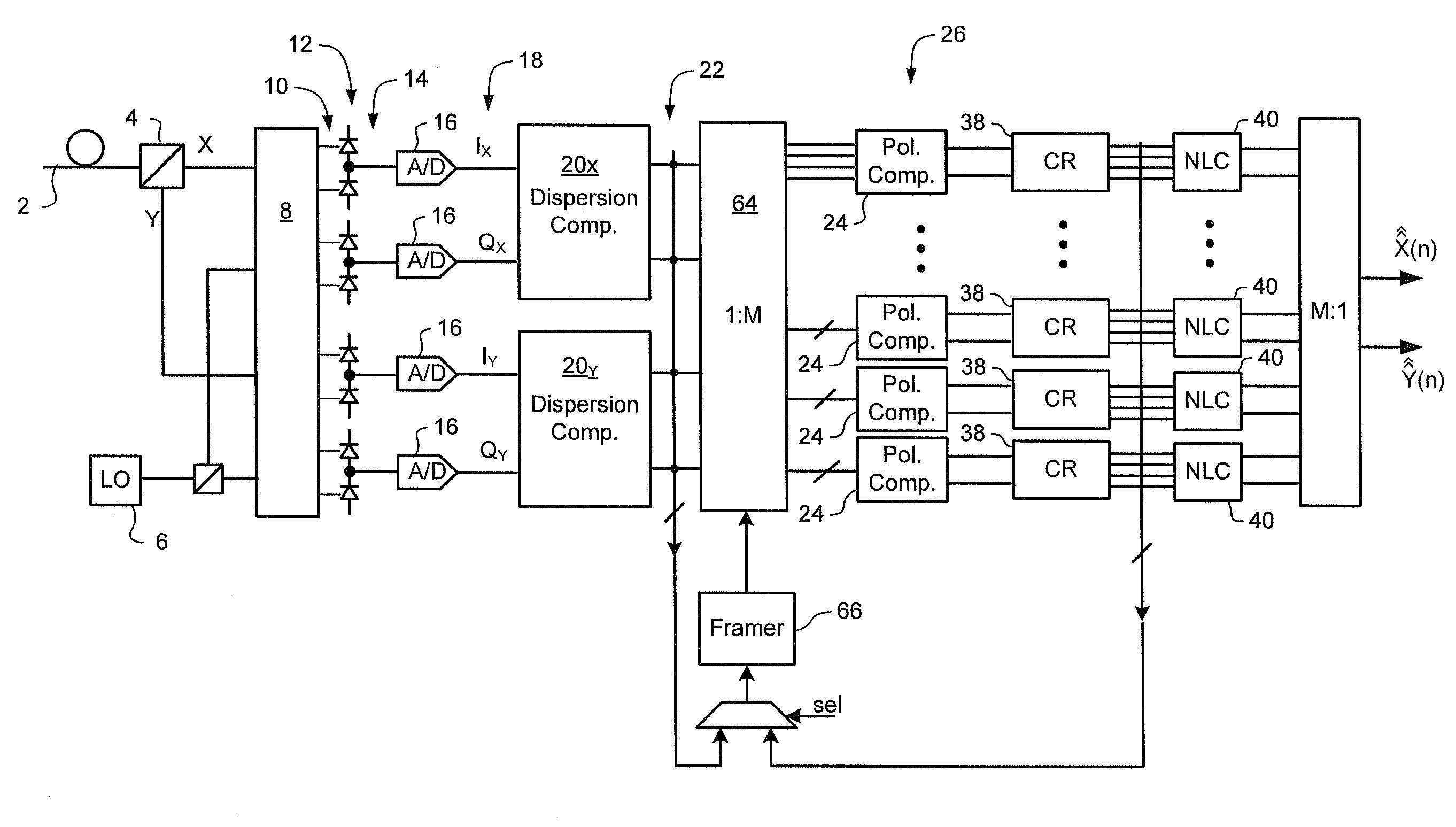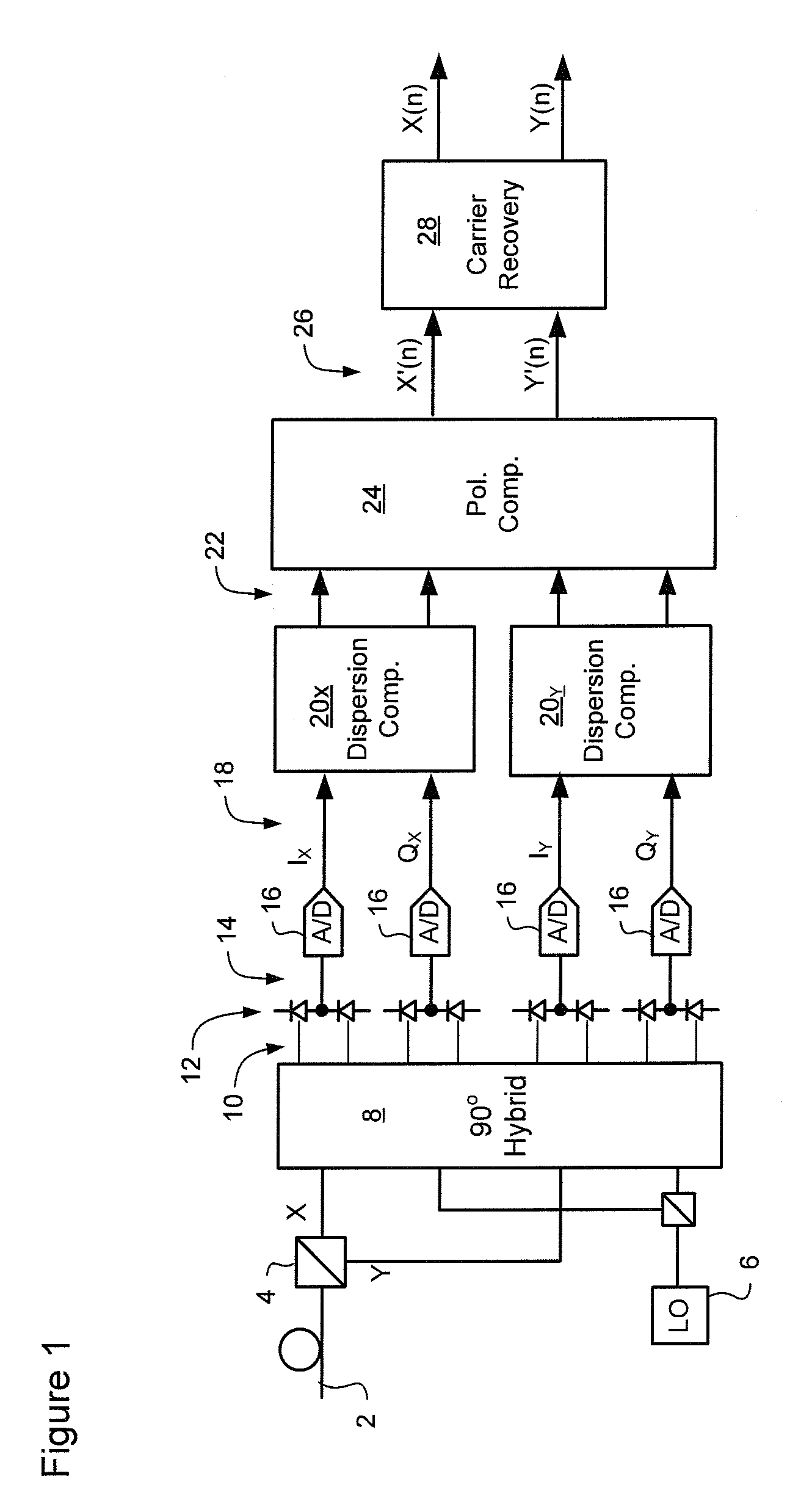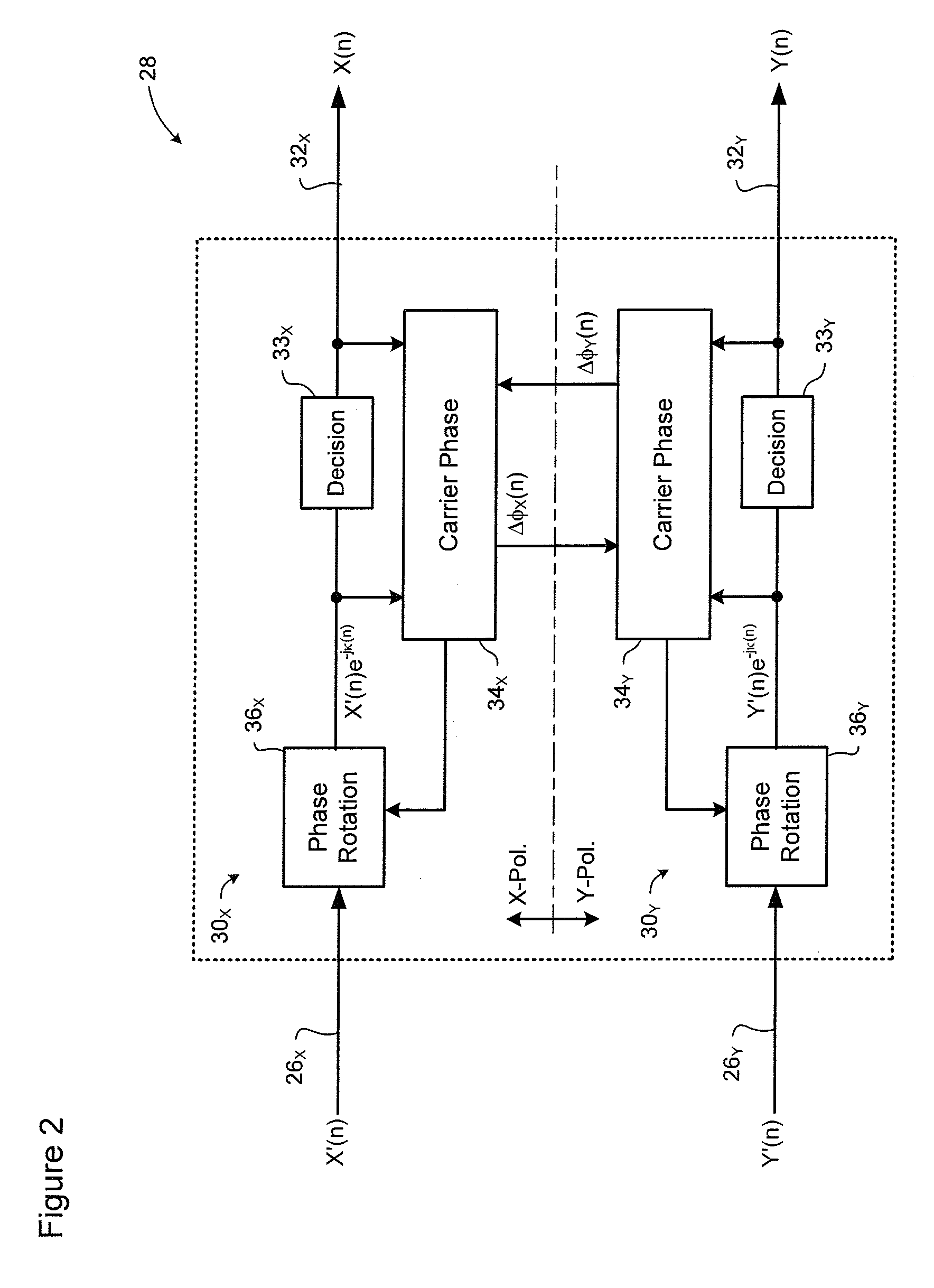Non-linear equalizer in a coherent optical receiver
a technology of optical receiver and equalizer, applied in the field of optical communication networks, can solve the problems of undesirable increase in the bit error rate (ber) of the recovered symbol values x(n) and y(n)
- Summary
- Abstract
- Description
- Claims
- Application Information
AI Technical Summary
Benefits of technology
Problems solved by technology
Method used
Image
Examples
Embodiment Construction
[0028]The present invention provides methods and techniques for compensation of non-linear impairments in a receiver unit of an optical network. Embodiments of the present invention are described below, by way of example only, with reference to FIGS. 3-11.
[0029]In general, the present invention provides a system in which compensation of residual ISI and DC offset is performed by digitally processing symbol value decisions generated by the carrier recovery block 28. FIG. 3 schematically illustrates a representative system implementing methods of the present invention.
[0030]As may be seen in FIG. 3, a preferred system in accordance with the present invention comprises a carrier recovery block 38 and a non-linear compensator (NLC) 40 connected in series. Preferably, the carrier recovery block 38 is virtually identical to that of FIG. 2, except that, instead of recovered symbol values 28 X(n), Y(n), the carrier recovery block 38 outputs respective hard and soft symbol value decisions fo...
PUM
 Login to View More
Login to View More Abstract
Description
Claims
Application Information
 Login to View More
Login to View More - R&D
- Intellectual Property
- Life Sciences
- Materials
- Tech Scout
- Unparalleled Data Quality
- Higher Quality Content
- 60% Fewer Hallucinations
Browse by: Latest US Patents, China's latest patents, Technical Efficacy Thesaurus, Application Domain, Technology Topic, Popular Technical Reports.
© 2025 PatSnap. All rights reserved.Legal|Privacy policy|Modern Slavery Act Transparency Statement|Sitemap|About US| Contact US: help@patsnap.com



